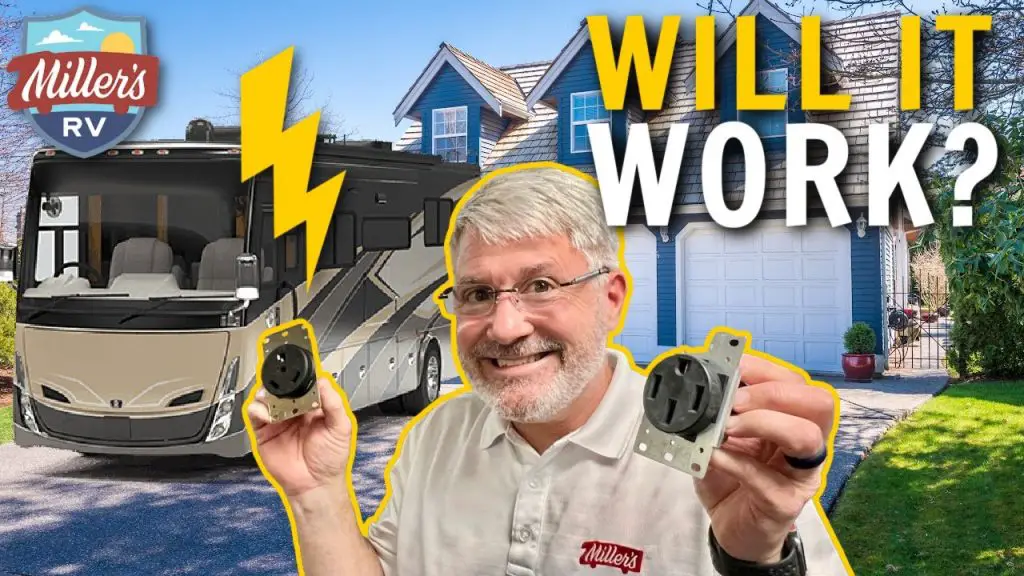As an electrician, one of the most common questions I receive is whether it is safe to plug a 30 Amp device into a 50 Amp outlet. The short answer is no, you should not plug a 30 Amp appliance into a 50 Amp outlet. Let me explain why.
The Difference Between 30 Amp and 50 Amp Outlets
Before we delve into why it is not safe, let’s understand the difference between a 30 Amp outlet and a 50 Amp outlet. The numbers 30 and 50 Amps refer to the amount of electrical current the outlet can handle. A 30 Amp outlet is designed to handle a maximum load of 30 Amps, while a 50 Amp outlet is designed for 50 Amps.
When you plug a device into an outlet, it draws the amount of electrical current it requires to operate. If you plug a 30 Amp appliance into a 50 Amp outlet, the outlet will supply maximum current based on its rating, which is 50 Amps. This can damage the 30 Amp appliance.
The Dangers of Overloading the Circuit
Overloading a circuit can lead to various electrical hazards, including electrical fires, damaged appliances, and electrical shock. When you plug a 30 Amp device into a 50 Amp outlet, the device becomes vulnerable to overheating and potential damage due to the higher current flow.
Additionally, the circuit breaker or fuse protecting the circuit may not trip or blow since it can handle the higher current. This means that the appliance may continue drawing current beyond its capacity, leading to potential damage or even a fire.
Using Adapters or Converters
Some people may consider using adapters or converters to plug a 30 Amp device into a 50 Amp outlet. While it may seem like a quick fix, it is not recommended. Adapters or converters change the shape or configuration of the plug, allowing it to fit into a different outlet type. However, they do not change the electrical current rating of the device.
Using an adapter or converter to plug a 30 Amp device into a 50 Amp outlet still exposes the appliance to the higher current, increasing the risk of damage or overheating. It is always best to use the appropriate outlet for the specified current rating of your device.
Proper Electrical Installations
If you need to power a 30 Amp device but only have a 50 Amp outlet available, it is advisable to have a qualified electrician install the proper outlet for your device. They can install a dedicated 30 Amp outlet, ensuring that your appliance operates safely and efficiently.
It is crucial to follow electrical codes and safety regulations when installing or modifying electrical systems to prevent any potential hazards. Consulting a professional electrician is always the best option to ensure your electrical installations are done correctly.
In Conclusion
In conclusion, it is not safe to plug a 30 Amp device into a 50 Amp outlet. Doing so can lead to potential damage to your appliance, overheating, and electrical hazards. It is always best to use the appropriate outlet for your device’s current rating and consult a professional electrician for any electrical modifications or installations.
Remember, electrical safety should be a top priority to protect yourself and your property from potential dangers.
Frequently Asked Questions Of Can I Plug My 30 Amp Into A 50 Amp
Can I Plug My 30 Amp Rv Into A 50 Amp Outlet?
Yes, you can! RVs with a 30 Amp plug can safely connect to a 50 Amp outlet using an adapter.
What Is The Purpose Of A 30 Amp To 50 Amp Adapter?
A 30 Amp to 50 Amp adapter allows you to connect your 30 Amp RV to a 50 Amp pedestal, ensuring you have sufficient power supply.
Is It Safe To Plug A 30 Amp Rv Into A 50 Amp Outlet?
Absolutely! As long as you use a proper adapter, it is safe to plug your 30 Amp RV into a 50 Amp outlet without any risks.
What Happens If I Plug My 30 Amp Rv Into A 50 Amp Outlet Without An Adapter?
Plugging your 30 Amp RV into a 50 Amp outlet without an adapter can overload your RV’s electrical system, potentially damaging it.
Do I Need Any Additional Equipment When Using A 30 Amp To 50 Amp Adapter?
No, you don’t need any additional equipment when using a 30 Amp to 50 Amp adapter. It’s a simple plug-and-play setup.
